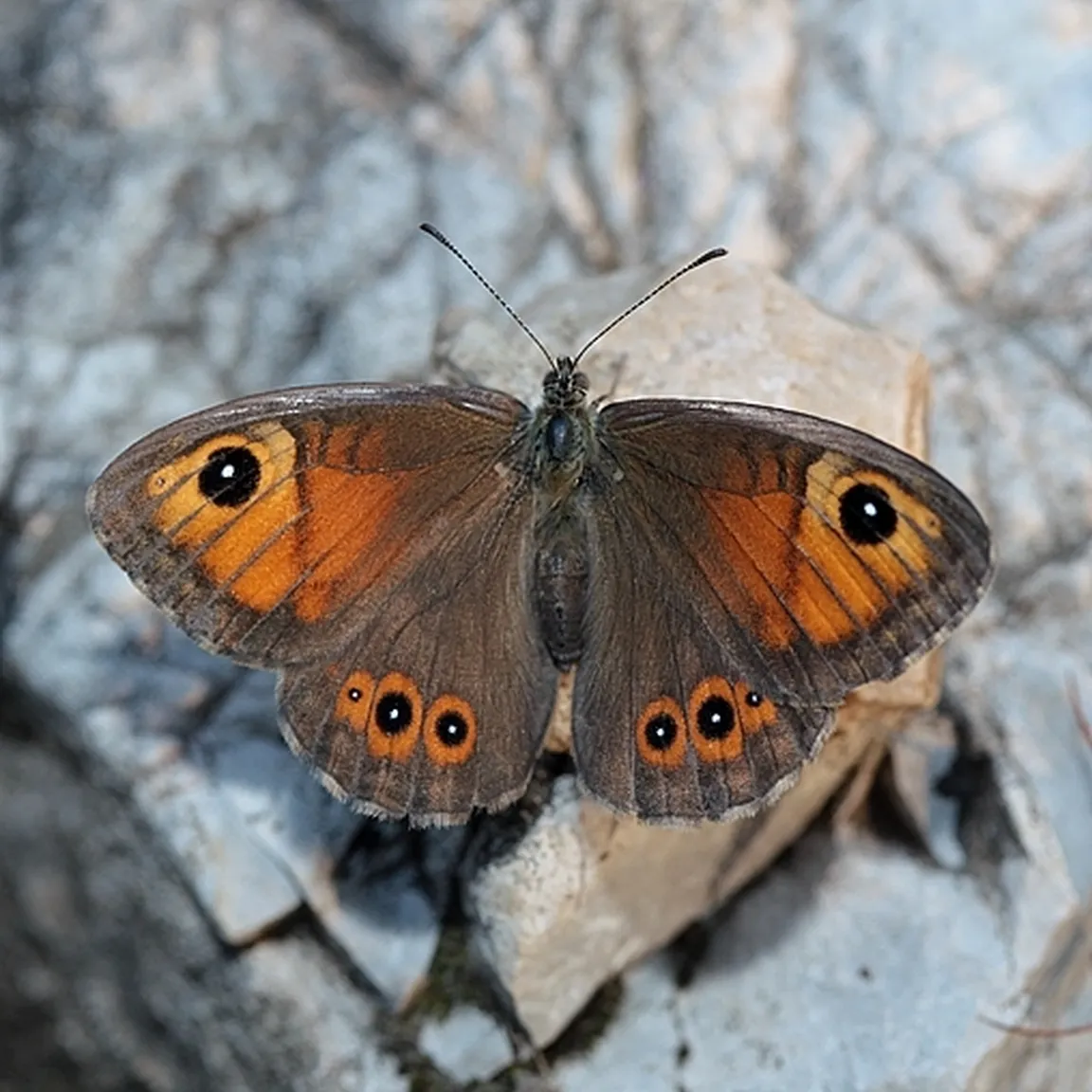Wingspan: 38–50 mm
Flight period of butterflies: in two generations from mid-April to June and from July to September
Larval host plants: species from the grass family (Poaceae)
The Large Wall (Lasiommata maera) has the upperside of the wings basically gray-brown in color, adorned with large black eyespots on a brown-orange background. The female has the orange larger part of the upperside of the forewings, while in males the orange color is limited to a few elongated spots beneath the eyespots. On the forewings on the upperside it has one large black 'eye' with a white center, beside it another small one. On the hindwings there are three eyespots, all medium-sized. The forewings on the underside are mainly brown-orange, which along the edges shifts to gray; in the upper outer corner there are two eyespots, one large and one small. The underside of the hindwings is entirely gray. At the outer edge the gray is interrupted by a row of black eyes with white centers surrounded by yellowish and brownish rings.
The Large Wall is found on unvegetated, rocky or sandy soils near grassy areas where it lives as caterpillars. Its habitat includes dry rocky meadows, the edges of scree and similar rocky places. Males are territorial and vigilantly guard and defend their territory, hence this species never reaches high densities anywhere. We can observe it along the coast, and it may also occur higher than the tree line.
The Large Wall is distributed throughout Slovenia. It is common in the Alpine world and in the Slovenian Littoral. In central and eastern Slovenia it is rare, and its populations are isolated and small. In Slovenia in general it is not endangered; however the survival of isolated and small populations of this species in the interior of the country is threatened.


